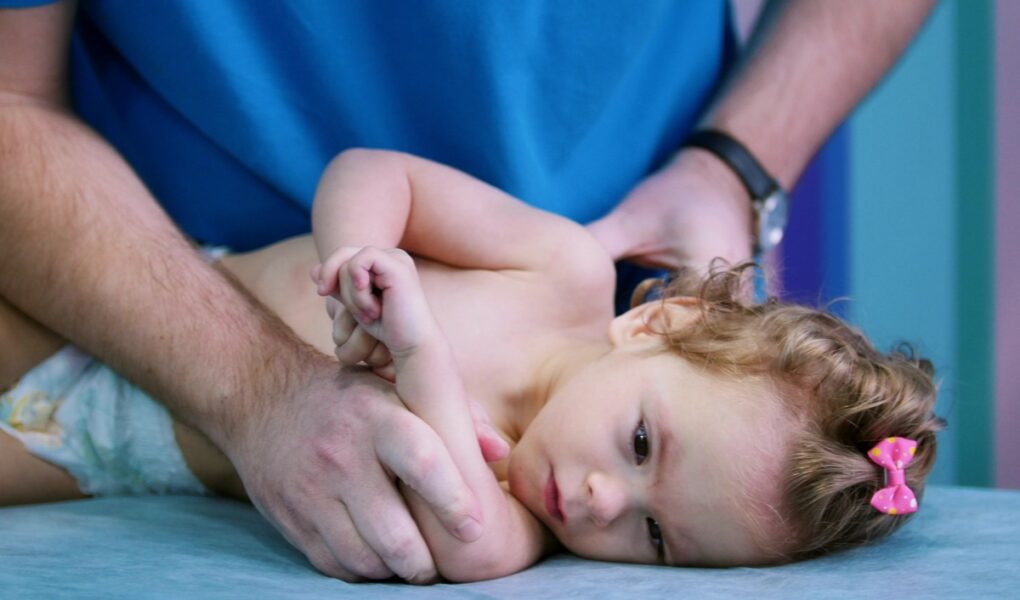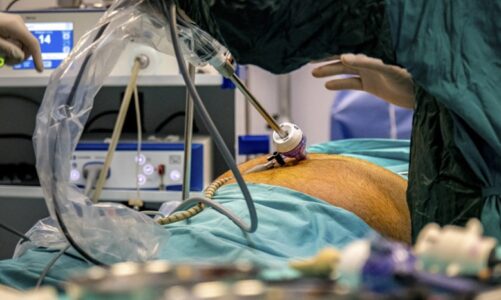Every loving parent would want the best for their child. Giving the best opportunity or chances to have the best childhood can make a child happy and build their character. However, not all children are lucky to be born with normal features just as many other normal children are. In the world of medicine, there are many kinds of medical conditions that can occur even from the very start of a child’s life. In this article, we will be learning about the diseases affecting very young children known as arthrogryposis.
Arthrogryposis is a general term used to describe the development of nonprogressive contractures affecting two or more areas of the body before birth. Contracture is referred to as joints become permanently fixed in an extended (straightened) or flexed (bent) position. This led to the limited range of motion of the joint. Arthrogryposis is also known as arthrogryposis multiplex congenita (AMC). It is present in 1 in 3000 to 12 000 live births. Arthrogryposis is not a specific diagnosis but rather a clinical finding of congenital contractures in more than 300 different disorders.
It is not exactly known why arthrogryposis occurs. Researchers believe it can be due to genetic or heredity. Possible causes include obstructions to intrauterine movements during pregnancy, early viral infection during baby’s development and inappropriate development of the nervous system, muscular system or even both. It also may be due to the presence of antibodies from the mother inhibiting the acetylcholine function in babies. Acetylcholine is a neurotransmitter that helps the muscle to function properly. Mutations in over 400 genes have been identified to be responsible for different types of arthrogryposis.
AMC is grouped into 3 main categories. This includes 1) amyoplasia which affects the shoulders, elbows, wrists, fingers, hips, knees and feet, 2) distal arthrogryposis which mainly occur in hands or feet and 3) syndromic arthrogryposis which affect the internal organs alongside with muscle and joints. The most common form is amyoplasia.
Symptoms are usually present at birth. Symptoms can differ greatly in range and severity can be different from one person to another. Most common symptoms are limited or absent movement around small and large joints (contractures). In most cases, affected infants have contractures of various joints. The leg joints are usually affected more often than the arms. Jaws and the back may also be affected. Muscles of the affected limbs may be underdeveloped (hypoplastic). This resulted in a tube-shaped limb with a soft doughy sensation when touched. Apart from the joint and muscle abnormalities, patients often have other bone issues such as abnormally slender fragile long bones of the arms and legs. Cleft palate can also be found. 1 out of 3 individuals with AMC may have structural or functional abnormalities of the central nervous system.
Abnormalities may be found during ultrasound in pregnancy and serve as markers for abnormal neurologic development or muscle disorders of the baby. When suspected of arthrogryposis in ultrasound finding, detailed ultrasound examination should be performed to detect other abnormalities that may give information of the underlying cause. At this point, genetic counselling may be offered to mothers. Muscle biopsies are frequently done to determine a cause or rule out other conditions. an electromyography (EMG), will be performed to make a distinction between myopathic and neurogenic arthrogryposis.
There is no cure for arthrogryposis but treatment is available to help improve the patient’s condition. Treatment can be surgery and non-surgery. In non-surgery treatment, occupational and physical therapy help to improve range of motion. Therapy should be started in early infancy with the goal of maximising strength, improving range of motion and enhancing sensorimotor development. Gentle stretching exercise can help lessen the contracture and improve motion. Splinting and casting may be used to help. Power mobility and other assistive devices are recommended to support patients. Surgery is often recommended to children with flexion contracture that is not improved with occupational and physical therapy. Corrective surgeries can help improve range of motion and help children to perform many daily routines independently such as feeding, hygiene, walking and many other physical activities. Physical therapy and splinting/bracing are likely to be recommended after surgery to maintain the correction obtained from surgery.
In essence, arthrogryposis is associated with joint contractures that occur due to various underlying causes. Contractures can cause complete or partially restricted movement of the affected joints. It is a rare condition. This condition is presented at birth and can be linked with many other different disorders. Severity and presentation of symptoms vary greatly. Treatments are usually multidisciplinary with the aim of ensuring the child has good muscle strength and mobility. Multidisciplinary approach can provide the best long-term outcome. Genetic counselling may be recommended for affected individuals and their families. The life span of affected people depends on the severity of the syndrome and associated malformations. Fortunately, in most cases, a person with arthrogryposis has a typical life span.




